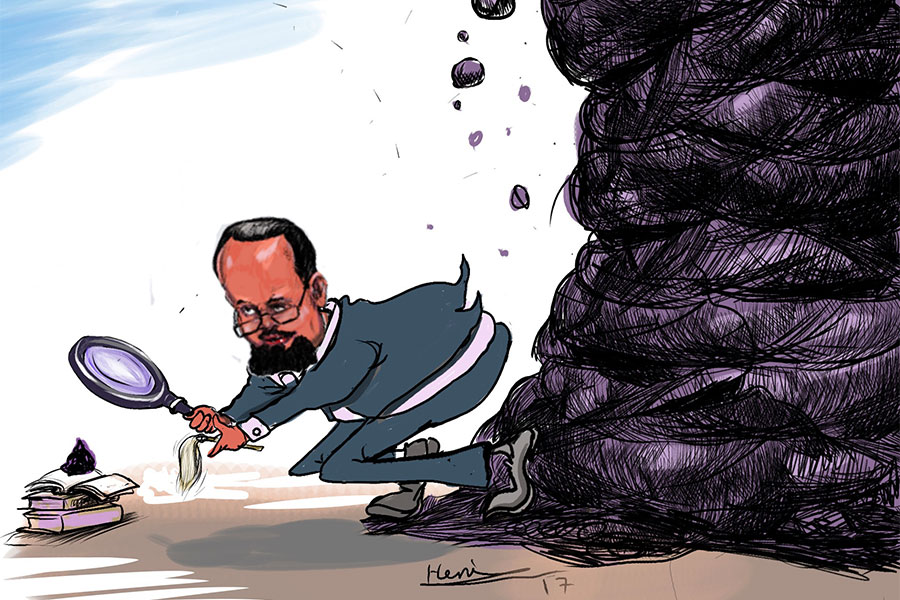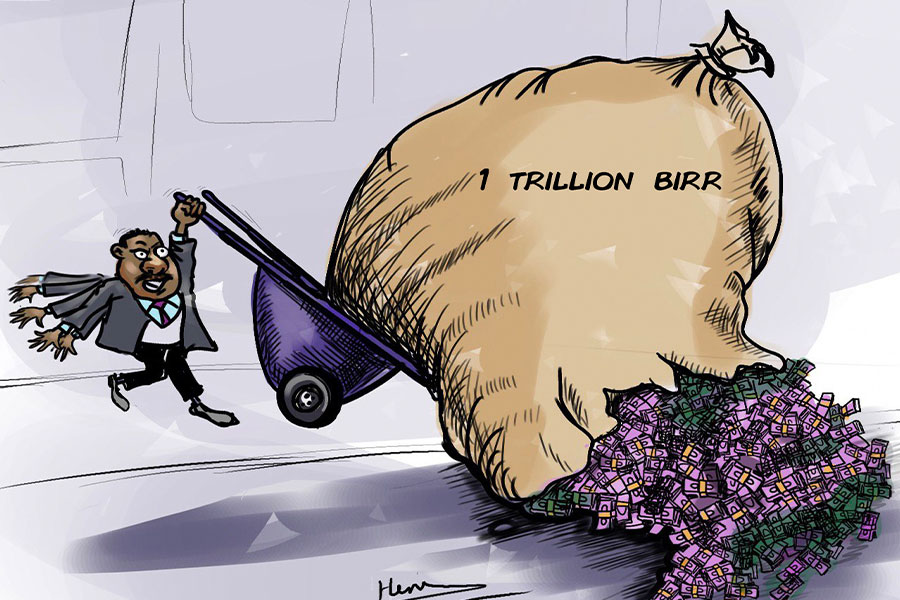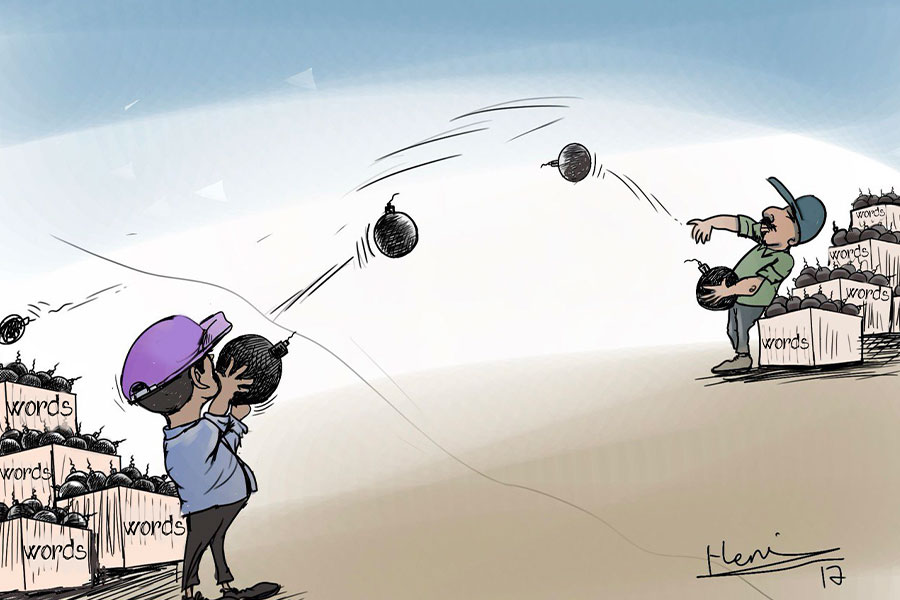
Agenda | Jun 15,2019
May 13 , 2023
By Daniel Gros
If one measures the impact of inflation on households at various income levels, adjusted for their group’s consumption patterns, one does find some cases where the effective inflation rate for the lowest-income quantile is several percentage points higher than it is for the wealthiest quantile. This phenomenon is especially prevalent in poorer countries, argues Daniel Gros, a director of the Institute for European Policy-Making at Bocconi University.
Economic policymakers worldwide have struggled to stem rising inequality – a trend that has impeded economic growth, fueled populist electoral victories and jeopardized liberal democracy. It was thus widely and understandably feared that unskilled workers would suffer deeply due to the COVID-19 crisis and, more recently, the energy-price shock that followed Russia’s full-scale invasion of Ukraine.
But, in both cases, the impact has been relatively benign.
After the initial pandemic shock in early 2020, economies and job growth rebounded strongly. Thanks to the robust recovery and far-reaching government support programs, income inequality fell by most measures, especially in the United States (US), owing to substantial cash transfers to households, but also throughout Europe, where government income support was more moderate.
However, another shock arrived before the pandemic recovery was complete: Russia launched its full-scale invasion of Ukraine, and energy prices spiked. But not all energy shocks are created equal. Whereas in the past, they were driven largely by crude oil prices – which peaked immediately after the invasion but are now in line with the pre-war average – natural gas is today’s main problem.
While natural-gas prices have fallen from their post-invasion peak in the summer of 2022, they remain two to three times higher than the pre-2021 average.
This is not a problem for the US. On the contrary, as a (small) net exporter of natural gas, the US has benefited from the energy-price shock, as its terms of trade have improved (export prices have increased by more than import prices). As a result, the country, in the aggregate, can consume more.
But while high gas prices have made the US slightly richer, they have made Europe substantially poorer. Because Europe imports most of its natural gas, consumers and firms are still paying significantly more for energy than before the war, and the eurozone’s terms of trade have deteriorated, implying an income loss of close to two percent of GDP.
With wage growth lagging behind inflation, real wages have fallen sharply throughout Europe (they have remained roughly constant in the US), creating the impression that inequality has increased. But the average values might be misleading. After all, wage growth is not necessarily consistent across income groups, and the inflation rate, as measured by the consumer price index, does not reflect differences in cost-of-living fluctuations across the income distribution.
Lower-income households spend a larger share of their budget on energy across and within countries than their high-income counterparts. In Romania – one of the European Union’s poorer members – energy and food account for 25pc of all consumption expenditure, compared to 13pc in much wealthier Germany. At the same time, the bottom quintile of the income distribution within Germany spends more on non-transport energy (eight percent) than the top quintile (five percent). This means that when energy prices increase, the official inflation rate might understate the extent to which poorer households lose purchasing power.
But other forces might offset the increase in energy costs. For example, poorer households tend to rent, rather than own, their residences, and rents have increased more slowly than the overall price level.
Such effects do not necessarily fully offset increased energy prices. If one measures the impact of inflation on households at various income levels, adjusted for their group’s consumption patterns, one does find some cases where the effective inflation rate for the lowest-income quantile is several percentage points higher than it is for the wealthiest quantile. This phenomenon is especially prevalent in poorer countries.
But there are also cases where low-income households have suffered a smaller loss in purchasing power than wealthier households. This is the case in Germany, where home ownership is less common, and in France, where household energy prices have been kept low. Since these two countries account for a significant share of the eurozone economy, the average difference between the purchasing-power losses suffered by the richest and the poorest households in the eurozone is small.
Moreover, in the US and some European countries, wages are increasing faster at the bottom end of the income distribution – what in the US has been called “unexpected wage compression”. In Germany, unskilled employees’ wages have increased by about eight percent over the last year, while senior specialists or executives have secured increases averaging less than two percent.
Observers are not wrong to highlight the hardship that the pandemic and the Ukraine war have wrought for many poorer countries and households, some of which struggled to keep warm this winter. But average figures and blanket statements fail to account for important differences across income groups, not least the disproportionate increase in income gains for those at the bottom of the distribution.
PUBLISHED ON
May 13,2023 [ VOL
24 , NO
1202]


Commentaries | Jul 20,2024

Viewpoints | Mar 30,2024

My Opinion | Jun 21,2025

Covid-19 | Aug 08,2020

Commentaries | Sep 02,2023

My Opinion | 131981 Views | Aug 14,2021

My Opinion | 128369 Views | Aug 21,2021

My Opinion | 126307 Views | Sep 10,2021

My Opinion | 123925 Views | Aug 07,2021

Dec 22 , 2024 . By TIZITA SHEWAFERAW
Charged with transforming colossal state-owned enterprises into modern and competitiv...

Aug 18 , 2024 . By AKSAH ITALO
Although predictable Yonas Zerihun's job in the ride-hailing service is not immune to...

Jul 28 , 2024 . By TIZITA SHEWAFERAW
Unhabitual, perhaps too many, Samuel Gebreyohannes, 38, used to occasionally enjoy a couple of beers at breakfast. However, he recently swit...

Jul 13 , 2024 . By AKSAH ITALO
Investors who rely on tractors, trucks, and field vehicles for commuting, transporting commodities, and f...

Jul 5 , 2025
Six years ago, Ethiopia was the darling of international liberal commentators. A year...

Jun 28 , 2025
Meseret Damtie, the assertive auditor general, has never been shy about naming names...

Jun 21 , 2025
A well-worn adage says, “Budget is not destiny, but it is direction.” Examining t...

Jun 14 , 2025
Yet again, the Horn of Africa is bracing for trouble. A region already frayed by wars...

Jul 6 , 2025 . By BEZAWIT HULUAGER
The federal legislature gave Prime Minister Abiy Ahmed (PhD) what he wanted: a 1.9 tr...

Jul 6 , 2025 . By YITBAREK GETACHEW
In a city rising skyward at breakneck speed, a reckoning has arrived. Authorities in...

Jul 6 , 2025 . By NAHOM AYELE
A landmark directive from the Ministry of Finance signals a paradigm shift in the cou...

Jul 6 , 2025 . By NAHOM AYELE
Awash Bank has announced plans to establish a dedicated investment banking subsidiary...